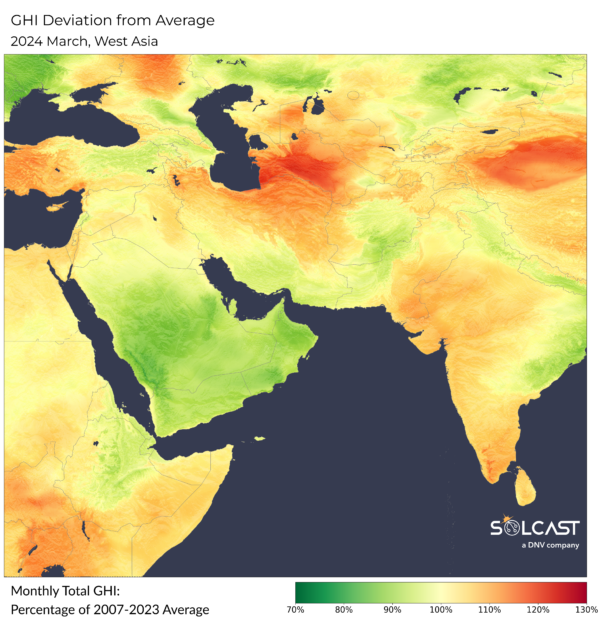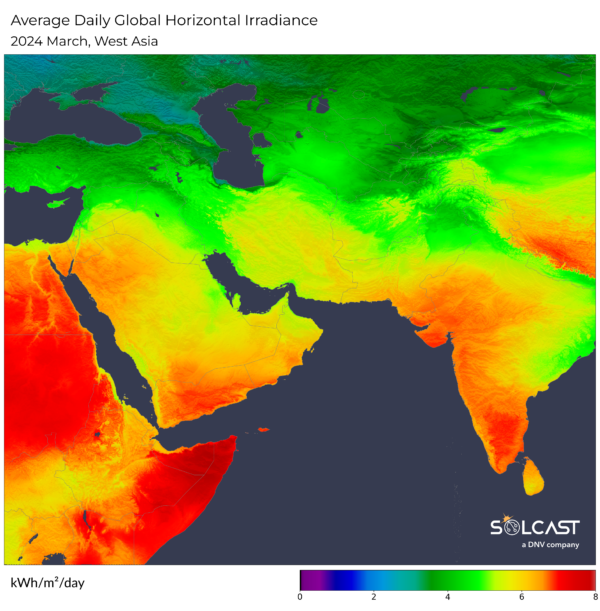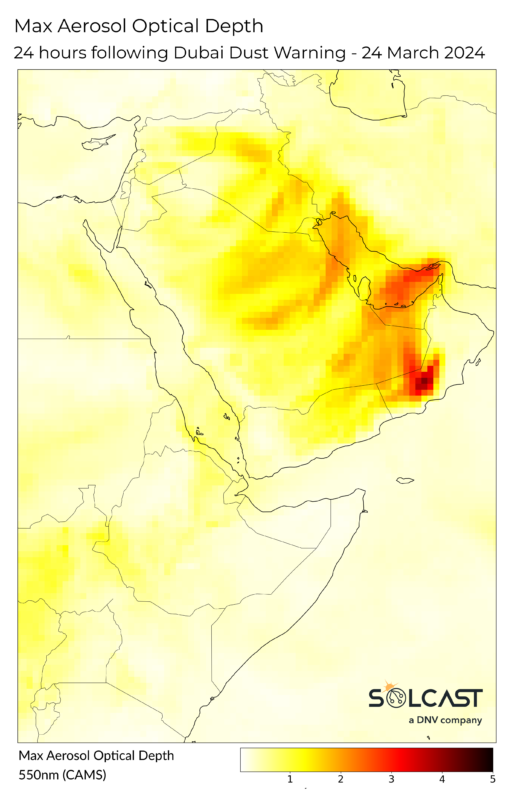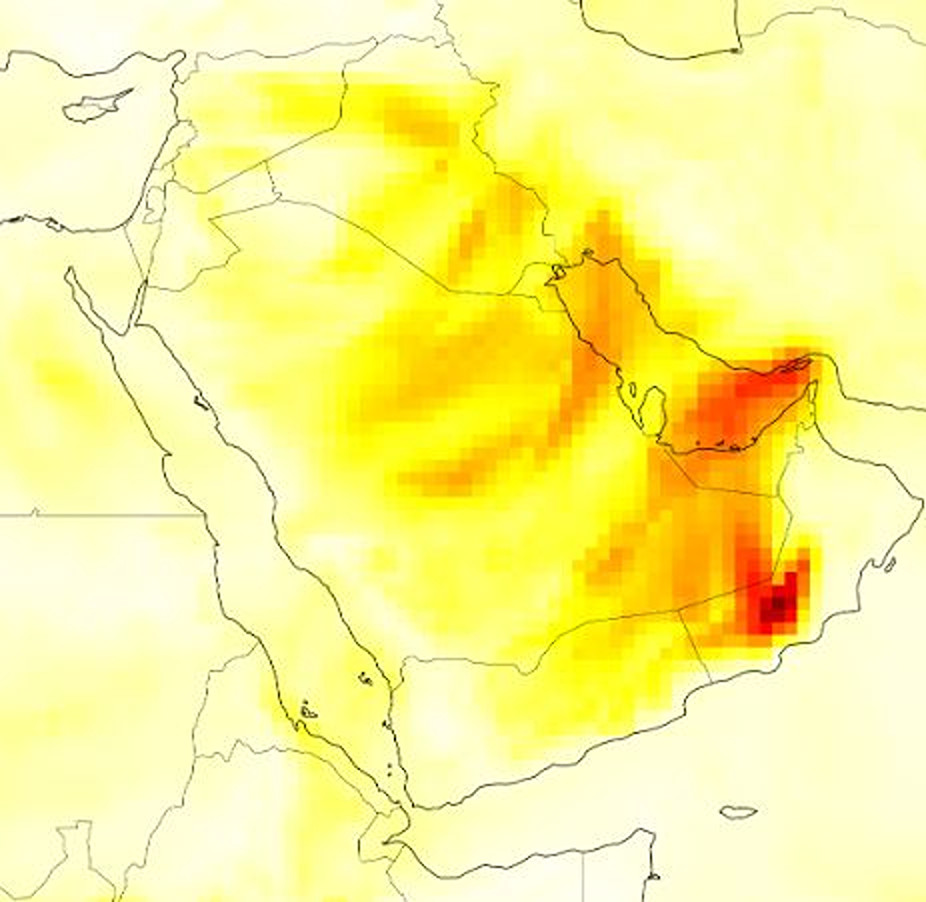March saw varied solar conditions across West Asia, with the Arabian Peninsula experiencing humid winds and dust storms that reduced solar irradiance to 90% of typical levels for the month. Meanwhile, Sri Lanka and parts of India enjoyed increased irradiance, up to 115% above normal, due to reduced cloud cover, contrasting with the eastern regions impacted by heavy rainfall. In the absence of a dominating weather system across the region, the rest of West Asia saw localized variations from 90-110% normal irradiance, though Turkmenistan saw up to 130%.

Solar projects in the Arabian Peninsula faced challenges as low pressure drove southeasterly winds which brought increased humidity, clouds, and occasional rain. The associated atmospheric instability delivered strong winds, increasing potential for sand and dust storms, as was seen at the end of the month. These impacts contributed to a 10-15% drop in solar irradiance across countries like Saudi Arabia, Bahrain, Qatar, the UAE, Oman, and Yemen. Notably, Yemen still reported the highest irradiance in the region, though it was a full kWh/m2/day below the usual.
In contrast, western and southern India saw a 5-15% increase in normal irradiance levels, reaching as high as 7 kWh/m2/day. However, heavy rainfall over the Himalayas, Nepal, and East India led to localized flooding and decreased solar irradiance

On March 24th, the UAE National Centre of Meteorology issued a dust warning due to strong winds stirring up dust across the Peninsula. Dust in the atmosphere diffuses radiation, significantly decreasing irradiance even when there are no clouds. This also leads to significant soiling of solar panels as dust settles. As seen in the below analysis of peak aerosol levels in the 24 hours following the warning, the atmospheric impact of this dust cloud was particularly pronounced in the UAE and Yemen, demonstrating how atmospheric conditions can abruptly alter solar energy generation.

Solcast produces these figures by tracking clouds and aerosols at 1-2km resolution globally, using satellite data and proprietary AI/ML algorithms. This data is used to drive irradiance models, enabling Solcast to calculate irradiance at high resolution, with typical bias of less than 2%, and also cloud-tracking forecasts. This data is used by more than 300 companies managing over 150GW of solar assets globally.
The views and opinions expressed in this article are the author’s own, and do not necessarily reflect those held by pv magazine.
This content is protected by copyright and may not be reused. If you want to cooperate with us and would like to reuse some of our content, please contact: editors@pv-magazine.com.



1 comment
By submitting this form you agree to pv magazine using your data for the purposes of publishing your comment.
Your personal data will only be disclosed or otherwise transmitted to third parties for the purposes of spam filtering or if this is necessary for technical maintenance of the website. Any other transfer to third parties will not take place unless this is justified on the basis of applicable data protection regulations or if pv magazine is legally obliged to do so.
You may revoke this consent at any time with effect for the future, in which case your personal data will be deleted immediately. Otherwise, your data will be deleted if pv magazine has processed your request or the purpose of data storage is fulfilled.
Further information on data privacy can be found in our Data Protection Policy.